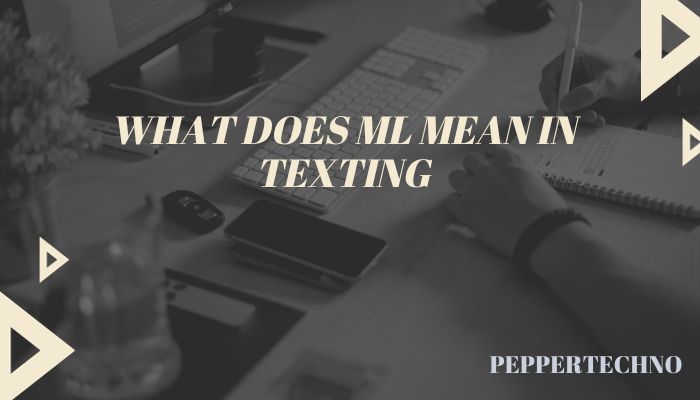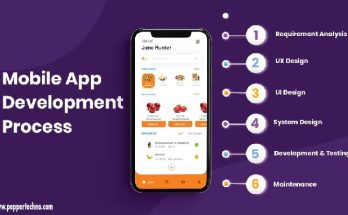What Does Ml Mean in Texting: The Secret Language of Texting
In today’s digital age, texting has become one of the most prevalent forms of communication. Whether it’s sending a quick message to a friend or having a conversation with a colleague, texting has become an integral part of our daily lives. However, with the rise of texting, a new language has emerged – the language of machine learning (ML). Understanding ML is crucial for effective communication in the modern world.
Machine learning is the use of artificial intelligence to enable computers to learn and make decisions without being explicitly programmed. In the context of texting, ML refers to the shorthand and abbreviations that have become common in digital communication. These shortcuts allow us to convey messages quickly and efficiently, but they can also lead to misunderstandings if not understood properly.
The History of ML
The evolution of ML can be traced back to the early days of pagers and pager codes. In the 1990s, pagers were popular devices used for sending short messages. Due to the limited character space on pagers, users had to come up with creative ways to convey their messages concisely. This led to the development of pager codes, which were essentially abbreviations and acronyms that represented common phrases or words.

With the advent of smartphones and text messaging, ML codes and abbreviations became even more prevalent. People started using shorthand like “lol” for “laugh out loud” or “brb” for “be right back.” These abbreviations allowed users to send messages quickly and efficiently, without having to type out full sentences.
Decoding the Basics
To effectively communicate in ML, it is important to understand some common abbreviations and acronyms. Here are a few examples:
– “LOL” stands for “laugh out loud” and is used to indicate that something is funny.
– “BRB” stands for “be right back” and is used to indicate that the person will be away from their device temporarily.
– “OMG” stands for “oh my god” and is used to express surprise or shock.
– “TTYL” stands for “talk to you later” and is used to indicate that the person will end the conversation and speak again at a later time.
These abbreviations are commonly used in texting and understanding them can help you navigate conversations more effectively.
The Art of Emojis
In addition to abbreviations, ML also relies heavily on emojis to convey emotions. Emojis are small digital images or icons that represent emotions, objects, or ideas. They have become an integral part of digital communication and are used to add context and tone to messages.
For example, a smiley face emoji 🙂 is often used to indicate happiness or friendliness, while a frowning face emoji 🙁 can indicate sadness or disappointment. There are also emojis for specific objects or activities, such as a pizza emoji. To indicate that someone is craving pizza or a party hat emoji???? to indicate that someone is celebrating.
Understanding the meaning behind popular emojis can help you interpret the emotions behind a message and respond accordingly.
The Power of Punctuation
In ML, punctuation marks play a crucial role in conveying meaning and tone. A simple change in punctuation can completely alter the interpretation of a message. For example, consider the following sentence:
“I can’t believe you did that.”
Now, let’s add some punctuation:
“I can’t believe you did that!”
By adding an exclamation mark at the end, the tone of the message changes from disbelief to anger or frustration. Similarly, adding a question mark can turn a statement into a question:
“You did that?”
Understanding how punctuation can change the tone of a message is essential for effective communication in ML.
The Double Meanings
One of the challenges of ML is that certain phrases or words can have multiple meanings. This can lead to confusion or misinterpretation if the recipient of a message is not familiar with the intended meaning. For example, the phrase “I’m dead” can be used to indicate that something is extremely funny, not that the person is actually deceased.
Similarly, certain words or phrases can have hidden meanings or codes in ML. For example, the phrase “Netflix and chill” is often used as a euphemism for casual sexual activity. Understanding these hidden messages and codes is important to avoid misunderstandings.
The Risks of Misinterpretation
While ML can be a convenient and efficient way to communicate, it also carries the risk of misinterpretation. Without the context of facial expressions or tone of voice, it can be difficult to accurately understand the intended meaning behind a message. This can lead to misunderstandings or hurt feelings.
For example, a sarcastic comment may be misinterpreted as genuine if the recipient does not pick up on the sarcasm in the text. Similarly, a joke may fall flat if the recipient does not understand the humor behind it.
To mitigate these risks, it is important to be mindful of the potential for misinterpretation and to clarify any ambiguous messages if necessary.
The Influence of Culture
ML varies across different languages and regions, and cultural differences can affect its usage. Certain abbreviations or acronyms may be more prevalent in one culture than another, and certain emojis may have different meanings or connotations.
For example, in some cultures, using certain emojis or abbreviations may be considered inappropriate or offensive. It is important to be aware of these cultural differences and adapt your ML usage accordingly when communicating with people from different backgrounds.
The Future of ML
As technology continues to advance, ML is likely to evolve and adapt to new communication platforms and trends. With the rise of voice assistants like Siri and Alexa, ML may expand to include voice commands and dictation. Additionally, as virtual reality and augmented reality become more prevalent, ML may incorporate new ways of expressing emotions and conveying meaning.
Furthermore, advancements in natural language processing and machine learning algorithms may enable computers to better understand and interpret ML, reducing the risk of misinterpretation.
Conclusion:
Understanding ML is crucial for effective communication in the digital age. By familiarizing yourself with common abbreviations, acronyms, emojis, and punctuation marks, you can navigate conversations more effectively and avoid misunderstandings. Additionally, being aware of cultural differences and adapting your ML usage accordingly can help foster better communication with people from different backgrounds.
As technology continues to shape the way we communicate, ML is likely to evolve and adapt. By staying informed about new ML trends and technologies, you can stay ahead of the curve and continue to communicate effectively in the ever-changing digital landscape.



